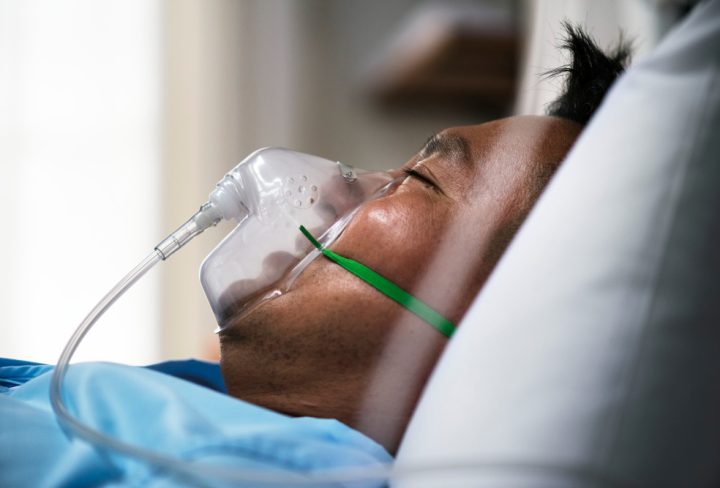In recent years, acute respiratory distress syndrome (ARDS) has gained attention due to its connection with severe COVID-19 cases. This condition poses a serious threat to respiratory health, highlighting the need for greater awareness. ARDS occurs when fluid builds up in air sacs in your lungs, making it difficult for oxygen to get into your bloodstream. Understanding this syndrome is crucial, as it can be life-threatening if not addressed promptly. With the rise in ARDS awareness, especially due to the pandemic, it’s important to learn more about its symptoms, causes, and treatment options.
Exploring ARDS: Symptoms, Causes, and Path to Recovery
ARDS can be scary, but recognizing its symptoms early can make a difference. People with ARDS might experience sudden shortness of breath, cough, and a feeling of suffocation. Other symptoms might include:
- Heavy breathing
- Rapid heartbeat
- Extreme fatigue
- Bluish skin or nails due to low oxygen
These symptoms of ARDS can appear quickly, sometimes within hours or days in severe cases. If you or someone you know experiences these signs, seeking medical help is crucial.
There are several causes of ARDS. Sometimes, it’s triggered by pneumonia, which is a lung infection that causes the air sacs to fill with pus and liquid. Other times, it could be due to sepsis, a serious infection that spreads throughout the body. Inhalation of harmful substances like smoke or chemical fumes can also hurt the lungs and lead to ARDS. Additionally, physical injuries, like those from car accidents, might damage the lungs causing ARDS to develop.
Some people are more prone to developing ARDS than others. Factors putting individuals at higher risk include:
- Advanced age: Older adults usually have weaker lung resilience.
- Chronic lung conditions: People with previous lung issues are more vulnerable.
- Pre-existing sepsis or pneumonia: Already having these conditions increases the risk.
- Smoking history: Smokers or those with extensive exposure to second-hand smoke are at heightened risk.
It’s essential to understand the differences between ARDS and pneumonia because they might feel similar initially. Both cause breathing difficulties, but ARDS is typically more severe and sudden. Where pneumonia is usually localized to lung infections, ARDS results from widespread lung damage. As with ARDS, pneumonia can lead to fever and coughing fits, but the treatment guidelines for ARDS require more intensive care and immediate medical attention.
When it comes to diagnosing ARDS, doctors use several tools. They might utilize X-rays or CT scans to detect fluid buildup in the lungs. Blood tests are also common for measuring oxygen levels and identifying underlying infections. Sometimes, a doctor may suggest a heart test to distinguish between heart-related lung issues and ARDS.
Understanding ARDS treatment guidelines is essential for recovering from this syndrome. It’s a challenging road, but with proper medical care, the journey can be smoother. Key treatments include:
- Oxygen Therapy: Ensuring the lungs receive adequate oxygen is vital.
- Ventilator Support: Machines help ease the breathing process.
- ECMO (Extracorporeal Membrane Oxygenation): An advanced treatment option similar to an artificial lung.
Ventilation strategies for ARDS are crucial to treatment, often involving special positioning of patients to improve lung function. These techniques support lung recovery by ensuring even oxygen distribution.
As you begin the path to recovery from ARDS, it’s important to know about the expected challenges. The ARDS recovery time can vary greatly, depending on the individual’s overall health and the severity of the condition. Sometimes, recovery might take weeks or months. Post-treatment challenges often include muscle weakness and potential cognitive impairment, both of which require ongoing therapy and support.
Recovery from ARDS might also involve interactions across numerous healthcare services, from pulmonary specialists to physical therapists. Despite these challenges, timely treatment can dramatically improve outcomes. The importance of early medical intervention cannot be overstated.
Continuing research into ARDS holds promise for more effective treatments. Many medical advancements focus on improving survival rates and diminishing long-term effects. Patients, families, and health practitioners must stay informed about these developments, as they provide hope and guidance.
In conclusion, awareness and understanding of acute respiratory distress syndrome are vital in improving health outcomes. Anyone experiencing the symptoms should seek prompt medical attention, and families should support continual research efforts to better combat this complex condition. With the right knowledge and readiness, ARDS can be managed effectively, protecting you and your loved ones.

